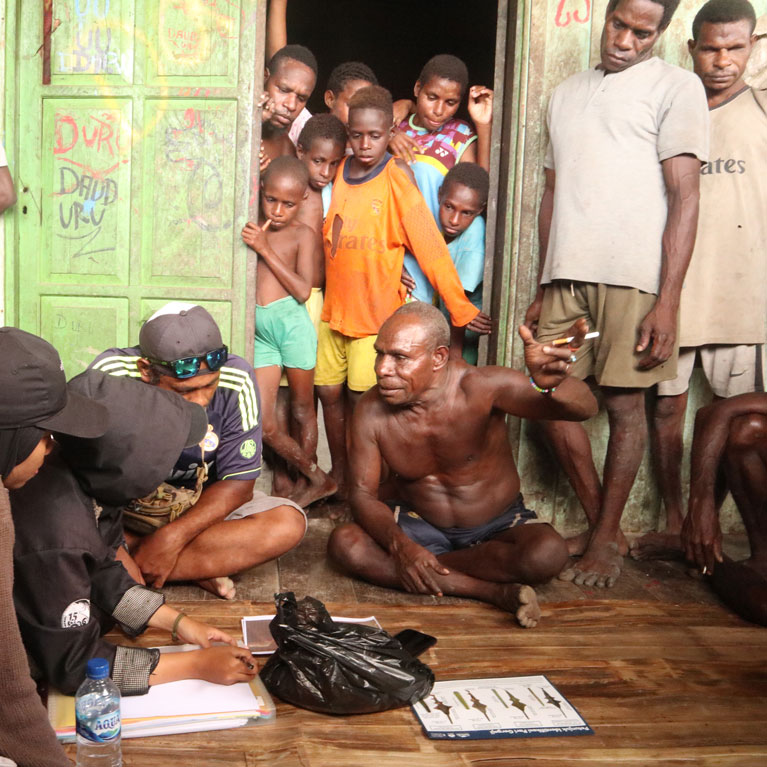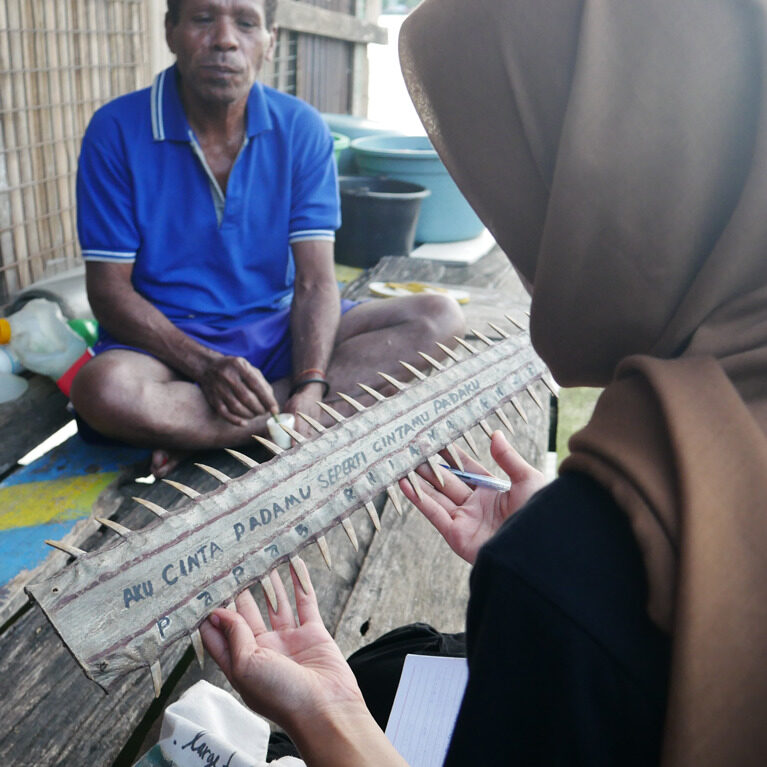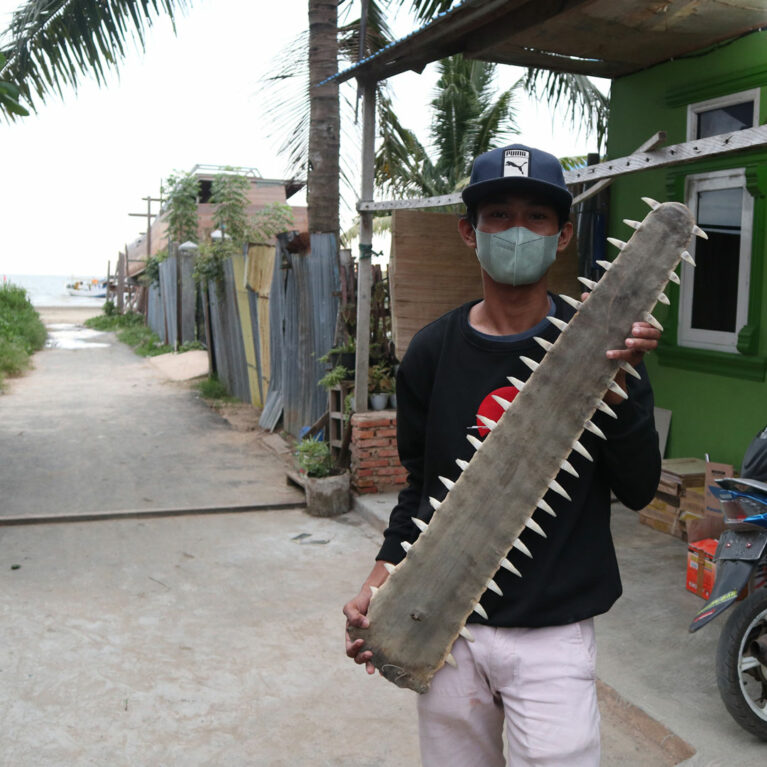Searching for sawfish in Indonesian seas
Yunita is in search of sawfish in Asmat Regency, in the Papuan provinces of Indonesia. Her project will describe the current presence, distribution and diversity of sawfish species in the region. She will also be investigating the cultural and socio-economic value of sawfish for the people of Asmat Regency. For rays that have largely disappeared from Indonesian waters elsewhere, this project can provide the Indonesian government with baseline information that will help to bring sawfish into a national conservation strategy.
I was born and raised in Indonesia, a country made up of thousands of islands that has the highest level of shark exploitation in the world. My interest in sawfish began when I was studying the socio-economics of fisheries at a university in Indonesia. During the course I became aware of the dynamics of coastal communities and how the sustainability of ocean resources depends on balancing the competing interests of commerce and biodiversity. After I graduated I joined the conservation organisation Sawfish Indonesia as its socio-economic coordinator. In this role I have conducted numerous interviews with fishermen to assess the...




Survey of Sawfish Distribution and Cultural Significance in Asmat Regency, Papua, Indonesia
To determine the current and recent historical presence of sawfish in Asmat Regency waters and provide initial data and information that can be utilised as a reference for the local and Indonesian governments to protect sawfish and their habitat.
Sawfish have largely disappeared from Indonesian waters and little is known about their current status in Papua Province. Although parts of the province have been overfished, more remote regions such as Asmat Regency are likely to still provide key habitat for sawfish. It is therefore crucial to document the status of sawfish populations in this area. The findings of this project will form a solid basis for developing more comprehensive research and species protection plans.
It is very difficult to determine the current status of sawfish populations in Papua Province, Indonesia, a former stronghold of Pristis species, due to the lack of data from this remote region. Without such information, it is possible that sawfish could become fully extirpated there. However, in the less fished Asmat Regency in Papua there is anecdotal evidence that sawfish were still caught there as late as 1995. In addition, historical photographs have been obtained that confirm that at least three species have been landed in Asmat: largetooth sawfish Pristis pristis, green sawfish P. zijsron and the elusive dwarf sawfish P. clavata.
This project is collecting the first comprehensive data to document the presence, distribution, change in abundance, and diversity of sawfish species in Asmat Regency. In addition, a cultural survey is being conducted to establish what members of the local community know about sawfish and their attitudes to the species. The Asmat people represent sawfish in their art and formerly used sawfish for meat and tools. Cultural studies are a crucial component of conservation efforts, as local attitudes to endangered species directly impact the outcome of such efforts. To be successful, conservation programmes in remote communities must foster interest in and concern for threatened species among the local people, drawing on their cultural values where appropriate. Therefore, to ensure the continued presence of sawfish populations in the Asmat region and in Papua Province generally, information about their status is necessary to provide guidance for the government and relevant institutions to immediately take concrete action to protect the species.
- To obtain data on the current presence, distribution, change in abundance, and diversity of sawfish species in Asmat Regency, Papua.
- To obtain information about the cultural and socio-economic value of sawfish for the people of Asmat Regency.
- To provide initial data to the Indonesian and local governments that can be used as a reference for making policies to protect sawfish and integrate the policies into the national conservation strategy.
RESULTS:
This research in Asmat is the first study for Sawfish Indonesia and even Indonesia itself to reveal the status and distribution of sawfish in Asmat waters. From the observations, Asmat has dense mangrove debt and has muddy and sandy water substrate conditions. This condition is very suitable for a nursery ground and a shelter for sawfish. After completing the research, it was revealed that sawfish are still found in Asmat waters, and there was at least six sawfish sighting points in 2022, all of which were in the estuary area. This point can be one of the initial information to determine the
critical point. In addition, from the results of the rostrum examination, two species were identified in the Asmat region, namely Anoxypristis cuspidata and Pristis pristis. The initial information collected is enough to continue further conservation efforts in the Asmat area and prepare Asmat to become one of the potential refuges for sawfish in Indonesia.
Another achievement was to reveal the cultural significance of sawfish in Asmat. The relationship between the local community and the sawfish is powerful, as evidenced by the belief in their ancestors and the findings of various carvings depicting sawfish. The importance of sawfish to the Asmat people will undoubtedly make it easier for Sawfish Indonesia to create protection programs that align with the perceptions of the Asmat people. Research focusing on cultural values can avoid conservation actions that damage existing local values and will strengthen the culture itself.

